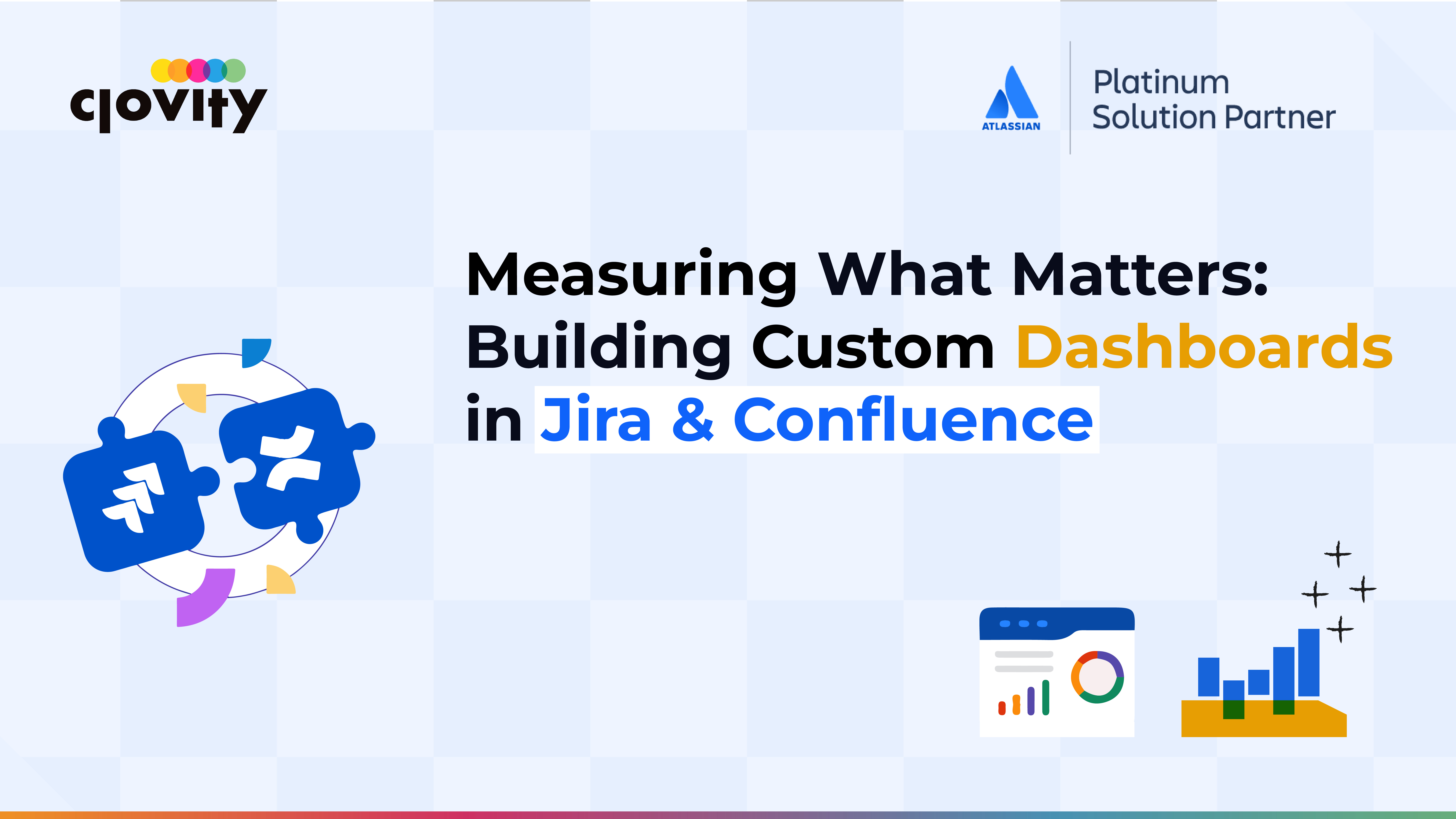Tracking work is one thing—understanding what the data actually tells you is where real value lies. Whether you’re managing a product roadmap, overseeing a development cycle, or monitoring service performance, dashboards are essential for gaining visibility and making timely decisions. Jira and Confluence offer robust capabilities for surfacing this information, but the key is in how you configure them.
At Clovity, we often see organizations with great tools in hand but no clear insights to show for them. Custom dashboards close that gap: they provide context, highlight trends, and give teams a shared view of progress—all in one place.
Why Dashboards Matter
Every team runs differently. A support desk cares about SLA compliance and backlog aging, while a development team focuses on sprint burndown and velocity. Product managers track roadmap status; executives look for alignment with business goals and KPIs. A one-size-fits-all dashboard simply won’t work.
Jira and Confluence support customizable, modular dashboards so every role and stakeholder group can see the metrics relevant to them—without getting lost in noise. Well-built dashboards do more than summarize data; they support real-time decision-making and help teams stay focused on the right priorities.
Building Dashboards in Jira
1. Custom Filters and JQL
Start by defining the data you need. Create saved filters with JQL, for example:
- Issues assigned to a specific team
- Epics not linked to a parent initiative
- Requests breaching SLAs in the last 30 days
2. Key Jira Gadgets
Some of the most useful gadgets include:
- Filter Results
- Two-Dimensional Filter Statistics
- Created vs. Resolved Chart
- Sprint Health
- Pie Chart
3. Role-Based Dashboards
Instead of one universal dashboard, create multiple ones for different audiences:
- Team Dashboard: Burndown, WIP limits, blockers, active sprints
- Manager Dashboard: Progress toward objectives, sprint completion rates, escalations
- Executive Dashboard: Strategic initiative status, risks, high-level KPIs
Building Dashboards in Confluence
1. Jira Macros in Confluence
Use macros to surface live Jira data:
- Jira Issues Macro
- Jira Charts Macro
- Roadmap Macro
2. Structured Reporting
Combine macros with narrative and context:
- Program Status Pages
- OKR Trackers
- Service Management Overviews
Making Dashboards Actionable
Focus on leading indicators and highlight outliers:
- Spike in reopened issues
- Rising blockers
- Dip in velocity
Common Dashboard Use Cases
- Product Management: Epic progress, feature readiness, customer feedback issues
- Agile Delivery: Sprint burndown, blockers, velocity trends
- Customer Support: Tickets opened vs. resolved, SLA breaches, CSAT trends
- Leadership: Initiative status, portfolio risks, OKR alignment
Dashboard Governance
Keep dashboards effective by reviewing, naming clearly, using templates, and auditing access regularly.
How Clovity Can Help
Clovity offers design, JQL optimization, Confluence templates, app guidance, and training to turn your metrics into meaningful insights.


